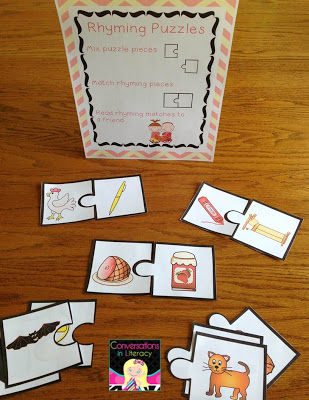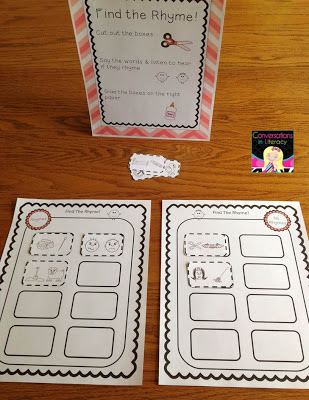The Grapes of Math: You can use this picture book to show students different ways of solving a problem using patterns and combinations of numbers.
Spaghetti and Meatballs for All: Guests are coming for dinner and how to seat them all around different tables causes some problems-funny silliness occurs while trying to figure out the right configurations!
Inch by Inch: Great book for introducing the inch measurement!
The Hershey Fractions Book: You can’t go wrong with teaching fractions with food! Your students will love being able to eat their math assignment.
Skittles Riddles: I haven’t used this food picture book, but it looks fun! It uses greater and less than, addition and subtraction to teach math in a fun way. There are a lot of math food books out there!
Picture Books for Math & Rhyming
I love picture books so much (I know most of you do too) that I am linking up again with First Grade and Fabulous for her picture book linky.
This week it is linky #2 and using picture books to teach math concepts. I love that! Any time you can use quality literature to teach any subject is great with me!
Time For Rhymes!
I have had a goal this summer: to get some items made that will give my students some fun ways to practice their phonemic awareness. I finished counting syllables (click here to see that post) and now I have identify and supply rhymes finished. Yay! Some of my struggling readers just have a difficult time hearing those rhymes in words. I am hoping this extra practice will help. Here is how it turned out:
Students find the rhyming pairs and match them up.
You can use clothespins, binder clips or even paper clips for students to mark the picture that rhymes with the one on top.
Students say the paired pictures and decide if they rhyme or not. Then they glue them to the proper page.
A strong background in phonemic awareness is a predictor for reading success. Frequently, students who come to me lack in this area. I hope this will help them build those skills.
With this packet I included 3 rhyming assessments. That way you can use it in literacy centers, small groups or even RtI intervention groups. The assessments can be your weekly progress monitoring if you use it for RtI.
You can organize your data from the rhyming and other assessments in this data binder. I will be creating more assessments to go with it this summer!
Happy Fourth of July to you and to all of AMERICA! I am truly blessed to live in this country. I am thankful to the men and women who have made that possible!









One of my goals this year is to incorporate more literature into math and use that literature to inspire the problems that we work on too. Thanks for the picture book ideas. 🙂
❀ Tammy
Forever in First
great Math ideas thank you so much!
Ironically, I just finished publishing five math rhyming books!! Please have a look around my site and tell me what you think! 🙂 http://arithmeticvillage.com/
Inch by Inch and Spaghetti and Meatballs for All are both great stories. 🙂
Wendy
Read With Me ABC
Great stories Lori! Thanks for linking up with me again!! 🙂
ღDeAnne
First Grade and Fabulous
You are welcome Tammy! Picture books for math is just one more layer to add to their learning. 🙂
Disneymum, you are welcome! Thank you for coming by!
Thank you for coming by Kimberly! Your math dice game looks like a lot of fun for the kids and a great way to practice adding and subtracting.
Thank you Wendy for coming by to visit!
Thanks DeAnne! Your picture book linky has been a lot of fun!
I love this Kindergarten assessment binder. Was wondering if you have anything similar for 1st and second grade? I am struggling finding good assessments for RTI baselines.
Thanks!
Hi Jgdwn! Here is a link to my RTI resources: https://www.teacherspayteachers.com/Store/Conversations-In-Literacy/Category/RTI-Resources-252163
I have data binders for each grade level that provide RTI graphs for specific skills. They are not the assessments, but tell you what to assess and how to document it. Not sure if that is what you need or not. Thanks for the question!